Approach Slowly—I Need to Smell Your Story.
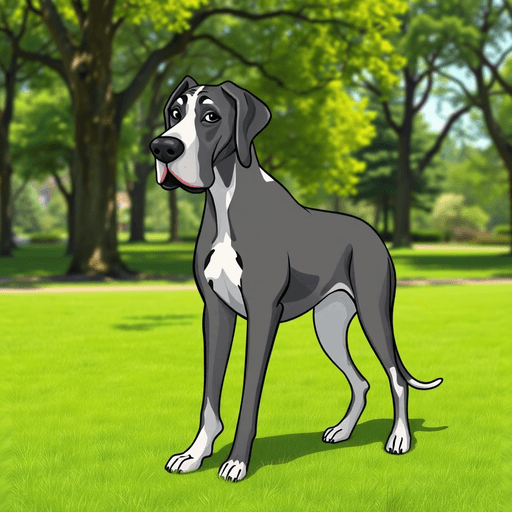
Great Danes & Strangers
Hey there, humans! It’s me, your friendly neighborhood Great Dane, and I want to tell you about meeting new people from my perspective.
So picture this: I’m a horse-sized dog trying to figure out if that new person at the door is a friend or someone I should bark at. It’s not easy being this big and trying to make good first impressions! One minute I’m all “Hey, new friend!” and the next I’m hiding behind my human’s legs like I’m a tiny Chihuahua.
Here’s the thing about us Great Danes – we’re total softies on the inside, but we look pretty scary on the outside. When I was a puppy, my humans made sure I met lots of different people. Thank goodness for that! Now, when the mailman comes, I don’t think he’s an alien invader. I think he’s the guy who brings interesting smells to our mailbox.
My humans use something called positive reinforcement when training me. Basically, that means I get treats when I’m friendly to strangers instead of accidentally knocking them over with my enthusiasm. Win-win situation if you ask me!
Sometimes my joints hurt because, well, being this tall isn’t always comfortable. On those days, I might not be as excited to meet new people. I just want to chill on my giant dog bed and watch Netflix.
The secret to being a good Great Dane around strangers? Practice, treats, and remembering that most humans are pretty cool once you get to know them. Plus, they usually have the best snacks!
Understanding the Great Dane’s Temperament
First off, yes, I’m huge. I know it, you know it, even the mailman knows it when he sees me coming. But here’s the thing – I’m a giant teddy bear with four legs and a tail that could knock over your coffee table (sorry about that, by the way).
Most of the time, I’m pretty chill. I like lounging around, taking naps, and pretending I’m a lap dog even though I weigh more than some small cars. My humans think this is hilarious for some reason.
But when it comes to my family, I take my job as protector seriously. Not in a scary way – more like a huge, gentle bodyguard who happens to drool occasionally.
Now, I’ll admit something embarrassing: sometimes new people or weird situations make me nervous. When that happens, I might bark a little or take a few steps back behind my humans. It’s not that I’m mean – I just need a minute to figure out if this new person is friend or foe.
Usually, they’re friends, especially if they’ve treats.
The best part about my humans is that they understand me. They help me feel safe when I’m worried and make sure I meet new people in ways that don’t freak me out. This is important because early socialization helps me become more adaptable and confident around strangers.
Trust me, a confident Great Dane is a happy Great Dane, and a happy Great Dane makes everyone’s day better!
Importance of Early Socialization
Hey there, humans! Let me tell you something super important about us Great Danes – we need to meet lots of people and animals when we’re tiny puppies. I know, I know, we’re never really “tiny,” but you get what I mean!
Early socialization is like going to school for us four-legged giants. It teaches us how to be cool, calm, and collected instead of turning into 150-pound scaredy-cats. Trust me, nobody wants a Great Dane who’s afraid of everything – we’re already big enough to knock over your coffee table when we get spooked accidentally!
Puppy classes are fantastic because we get to hang out with other dogs and learn that not everyone is scary. Plus, we figure out that humans other than our family are pretty neat, too. This is super important because when you’re as big as us, people notice when we are not being friendly.
Here’s why getting us out and about early makes such a huge difference:
- We become brave explorers instead of giant couch potatoes who hide behind your legs
- We learn that strangers might’ve treats (critical information!)
- We figure out how to play nice with cats, small dogs, and even hamsters without accidentally squishing them.
- We get comfortable with weird stuff like vacuum cleaners, car rides, and those terrifying plastic bags that crinkle.
- We become better at understanding what you humans are trying to tell us
The best part? When we’re well-socialized, we become the gentle giants everyone loves instead of the clumsy goofballs who knock over small children at the park. Though let’s be honest – we’re still pretty goofy no matter what!
Additionally, early socialization supports controlled growth velocity, which is crucial for our physical development as we grow into our giant selves.
Training Techniques for Great Danes
Training Tips from a Great Dane‘s Point of View
When teaching us Great Danes, please use those yummy treats and lots of praise. Trust me, we LOVE food almost as much as we love you. Don’t yell at us or get mean – that just makes us sad and confused. We’re gentle giants who want to make you happy, but sometimes we forget how big we are and accidentally knock over your coffee table. Oops!
Here’s the thing about us Great Danes – we need to meet lots of different people and dogs when we’re puppies. Take us to the park, let’s say hi to your neighbors, and show us that mail carriers aren’t monsters (even though they smell suspicious). If you do this early, we won’t turn into scaredy-cats later. Well, we’d never actually be cats, but you get what I mean.
The best part about training with treats and praise is that it makes learning fun! We want to sit, stay, and come when called because good things happen when we do. Plus, it helps us figure out that jumping on Grandma isn’t the best way to say hello, even though we’re just excited to see her. Remember, socialization is crucial for our training success, so don’t skip those playdates!
Positive Reinforcement Methods
My Human’s Training Methods (And How I Train Them Back!)
Woof! Let me tell you about this whole “training” thing from my perspective as a Great Dane. My humans think they’re training me, but honestly, I’m doing most of the work here!
So my humans are obsessed with something called “positive reinforcement.” This means they give me awesome stuff when I do what they want. I’m totally okay with this arrangement! Here’s how our little system works:
- Treat rewards – Oh boy, do I love this part! Every time I sit, stay, or pretend to listen, BOOM – treats appear like magic. I’ve got my humans trained so well that sometimes I have to look cute, and the treats start flowing. Who’s training whom here?
- Command consistency – My humans repeat the same words over and over. “Sit, Max, sit!” They seem proud when I plop my giant butt down. Little do they know I was planning to sit anyway because the couch looked comfy.
- Reward timing – My humans have this clicker thingy that makes noise right when I do something good. Click-treat, click-treat! It’s like they’re playing a game, and I always win because I get the snacks.
- Fear reduction – My humans work hard to make sure I’m not scared of anything. This is great because it means I get extra cuddles and reassurance. Sometimes I act a little nervous to get more attention. Don’t tell them!
- Success celebration – When I learn something new, my humans get SO excited. They jump around, use baby voices, and give me belly rubs. It’s pretty entertaining watching these grown-ups lose their minds over me walking nicely on a leash.
The best part about all this “positive reinforcement” stuff is that my humans are always happy, I’m always getting treats, and everyone wins. And you know what? This whole process helps to establish a positive training foundation for my future behavior!
Sure, I’ve learned to sit and stay, but more importantly, I’ve trained my humans to give me exactly what I want when I want it.
Now, if you’ll excuse me, I need to go practice my “innocent puppy dog eyes” look. It’s treat time!
Consistent Socialization Practices
So, my humans figured out this whole treat thing (finally!), and now they’re taking me on these awesome adventures they call “socialization.” It means I get to go places and sniff ALL the things. Score!
Every week, we hit up different spots around town. The park is my absolute favorite because there’s grass to roll in and squirrels to chase (though I never catch them – they’re sneaky little guys).
We also visit these cool stores where people WANT me to come inside! Can you believe it? Usually, humans are always saying “get off the couch” or “stop drooling on that,” but at pet stores, I’m like a celebrity. Everyone wants to pet my giant head!
The best part? Puppy playdates! Sure, I’m way bigger than most of my buddies, but that just means I’m the gentle giant of the group. I’ve learned that not every dog wants to wrestle like I do, so now I use my “indoor voice” when playing.
My human says I’m getting good at reading the room – whatever that means. Plus, they make sure to focus on positive reinforcement during our training sessions, which helps me feel more confident around new people.
All this running around and meeting new friends is making me a confident pup. Plus, my human seems way less stressed when we’re out, which means more belly rubs for me. Win-win!
Protective Instincts and Watchdog Behavior
Hey there, humans! Let me tell you about my job as a Great Dane security guard – it’s pretty awesome!
So here’s the thing about being huge like me. When sketchy people come near our house, I don’t even have to do much. I just walk up to the window or door, and suddenly they remember they’ve somewhere else to be! It’s like having a superpower, except my superpower is being the size of a miniature horse.
I take my watchdog duties seriously, but I’m not one of those yappy dogs who bark at every leaf that falls. That’s just annoying, and honestly, it gives me a headache. Instead, I use my “indoor voice” and only speak up when something seems fishy. My humans appreciate this because nobody wants their giant dog waking up the whole neighborhood at 3 AM. After all, a squirrel looked at me funny.
The best part about my job is that I get to protect my favorite people while still being a total couch potato most of the time. I keep one eye open for trouble and the other eye on my humans to make sure they’re safe and happy. Plus, they always tell me what a good boy I am, which is basically the best payment ever. Strong bonds with family members help me feel even more motivated to keep my loved ones safe.
Being a gentle giant security guard is the perfect gig for a dog like me!
Natural Deterrent of Intruders
I’m Your Four-Legged Security System!
Woof! Let me tell you about my job as a Great Dane – I’m a furry security guard who works for belly rubs and treats!
You humans think I’m this big, scary dog who keeps bad guys away. Well, you’re not wrong! When I stand up, I’m taller than most people. That’s pretty cool. I don’t even have to do anything scary – I just have to show up and people go “Whoa, that’s a BIG dog!”
My ears are like super-powered radar dishes. I can hear the mailman coming from three blocks away (and yes, I WILL tell everyone about it). When someone walks by our house, I know if they belong here or not. It’s like having a built-in friend detector!
Here’s what makes me awesome at protecting our home:
- I’m huge and look intimidating (but I’m just a gentle giant)
- I love my family SO much that I’d do anything to keep them safe
- My hearing is incredible – I notice every weird sound
- I can tell who’s family and who’s a stranger just by their smell
- I know the difference between the pizza delivery guy and someone who shouldn’t be here
The funny thing is, most of the time I just have to exist to do my job. Bad guys see me through the window and think, “Nope, not today!”
Meanwhile, I’m probably just hoping someone will throw my tennis ball. My gentle giant personality means I can protect while still being the loveable goofball who gets excited about dinner time and thinks I’m a lap dog!
Alertness Without Excessive Barking
We Great Danes are pretty smart cookies when it comes to figuring out what’s worth barking about. Sure, I could spend all day woofing at every squirrel, mail carrier, and leaf that dares to move in my territory. But honestly? That sounds exhausting, and I’d rather save my energy for more important things – like napping on your couch.
When I do bark, it’s usually because something deserves my attention. Like that weird guy lurking around the front door at midnight, or when the pizza delivery person arrives (which is always cause for celebration, obviously). I’m basically like a tall, furry security system that only goes off when it matters.
The best part? My bark isn’t some high-pitched yapping that makes your neighbors want to throw shoes at the fence. When this gentle giant speaks up, it’s more like a deep, rumbly “Hey, pay attention to this!” It gets the job done without making everyone’s ears bleed. Plus, my protective instincts are finely tuned, allowing me to recognize territorial surveillance that truly warrants a bark.
Health Considerations Affecting Behavior
How My Health Affects How I Act Around New People
Hey there! Let me tell you something important about us, Great Danes – sometimes our bodies don’t feel so great, and that changes how we act around strangers. It’s not that we’re being mean on purpose!
My Hips Hurt Sometimes: You know how your knees hurt after running too much? Well, my hips can feel like that all the time because of something called hip dysplasia.
When I’m hurting, I mightn’t want to play with new people, or I might get grumpy if someone tries to pet me in the wrong spot. I’m not being rude – I need some space when I’m sore!
My Tummy Gets Really Scared: Sometimes my stomach gets twisted up in a scary way called bloat.
When this happens, I feel super nervous and can’t sit still. I might pace around or seem worried when meeting new friends. It’s like having the worst stomachache ever, so I’m not thinking about being social.
My Energy Goes Crazy: My thyroid is like the gas pedal in my body.
When it’s not working right, I’m either super sleepy and don’t want to say hi to anyone, or I’m bouncing off the walls like I drank too much coffee. Either way, I probably won’t act like my normal, friendly self.
My Joints Ache: Just like grandparents get creaky joints, I can get arthritis that makes me feel stiff and ouchy.
When my legs hurt, I mightn’t be as excited to meet new people because moving around isn’t fun anymore.
I can’t See Very Well: When my eyes don’t work right, everything looks blurry and scary.
New people seem extra frightening because I can’t tell if they’re friendly or not. I might hide behind my humans or act nervous because I can’t see what’s going on!
Engaging With Strangers in Different Environments
Meeting New Friends in Different Places: A Great Dane‘s Guide
Let me tell you how different spots affect the way I meet new people. In quiet parks, everyone seems more chill. People stop to pet me instead of running away!
There’s something about green grass and fresh air that makes humans friendlier. I can wag my tail without accidentally knocking over a small child, and my relaxed vibe helps other dogs and their owners feel comfortable approaching me.
But busy city streets? That’s a whole different ball game! Everyone’s rushing around, and my massive paws make a lot of noise on the sidewalk. Sometimes people jump when they see me coming around a corner – I guess they’re not expecting a dog the size of a small horse.
The fast pace and crowds make quick hellos the norm, though I always try to squeeze in a friendly tail wag.
Here’s what I’ve figured out: my attitude makes all the difference. When I keep my ears up and my tail wagging (carefully, so I don’t clear any tables), people smile back.
A gentle approach works better than my enthusiastic puppy-style bouncing, even though I’m technically still a puppy at heart.
Local dog shows and community events are my absolute favorite! Everyone there expects to meet new furry friends, so I feel right at home.
Plus, there are usually treats involved, which never hurts.
The secret is reading the room – or in my case, reading the park, street, or event. By matching my energy to the environment, I help create positive experiences for everyone I meet, human and canine alike!
Final Thoughts
When I stand up, I can high-five your ceiling fan. But here’s the thing – we’re total softies inside! My heart is just as big as my paws, and trust me, my paws are enormous.
Now, about meeting new people – this is where things get interesting. When I was a puppy (imagine a puppy the size of a regular adult dog!), my humans made sure I met tons of different people. Smart move! Because of that early training, I now think every stranger is just a friend I haven’t played with yet.
Some of my Great Dane buddies didn’t get that early practice, and boy, do they get nervous around new faces! They might bark or hide behind their humans. Pretty funny watching a 150-pound dog try to hide behind someone’s legs, let me tell you.
Here’s my secret superpower, though – I’m like a furry security guard! I watch over my family’s house, and if something seems fishy, I’ll let everyone know with my booming bark. It’s so deep it probably registers on earthquake monitors! But once my humans say the visitor is cool, I’m all tail wags and slobbery kisses.
The best part? Everywhere I go, people stop and stare. Kids point and go “WHOA!” Adults whip out their phones for pictures. I’m a four-legged celebrity! And honestly, I love every minute of it.
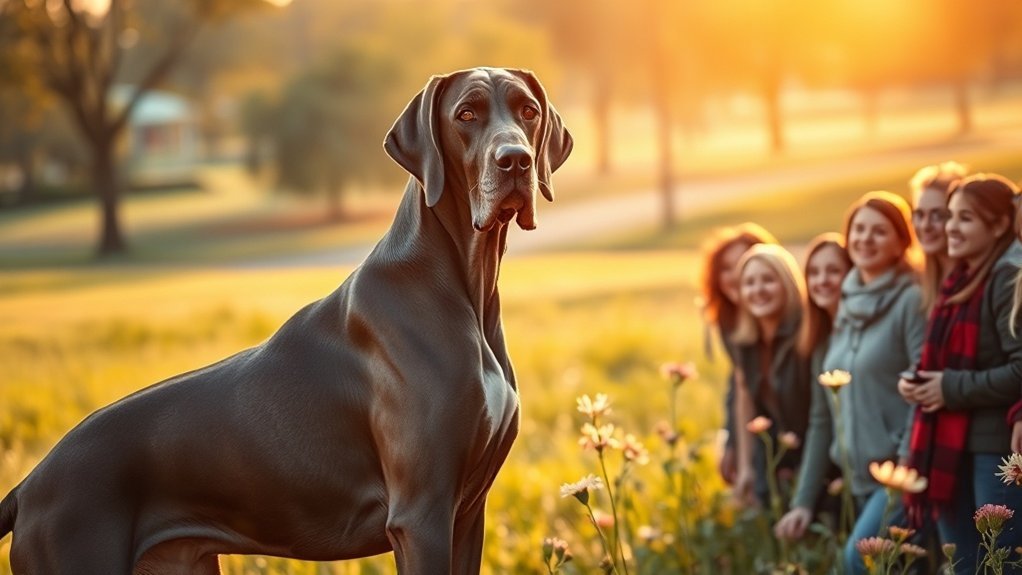
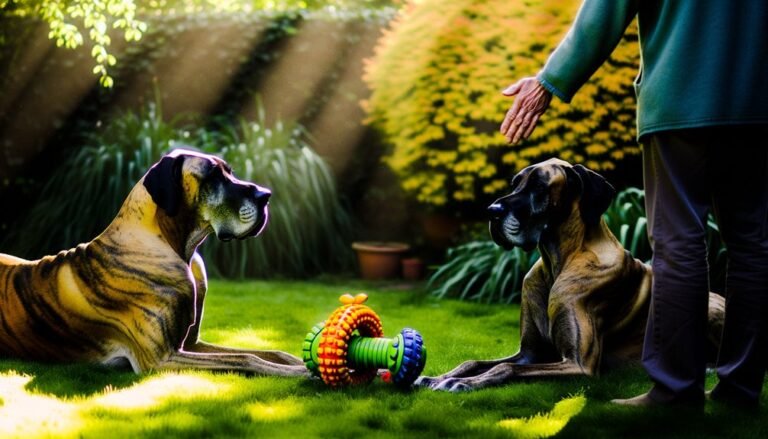
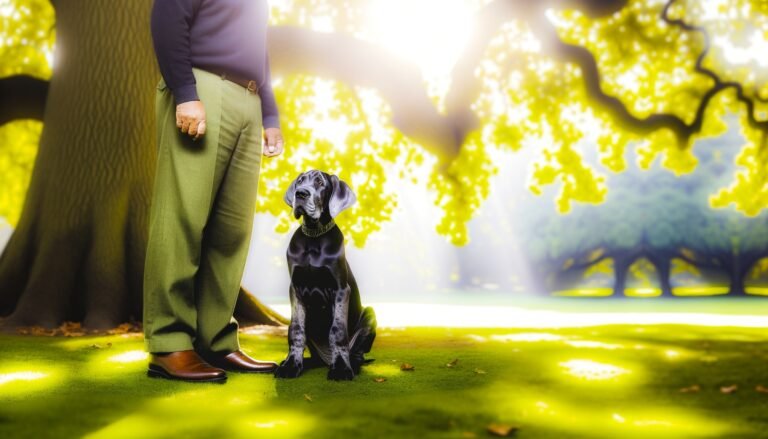

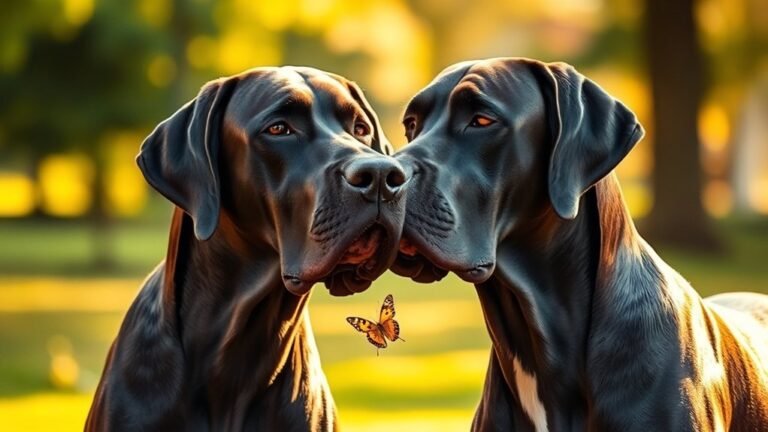

4 Comments